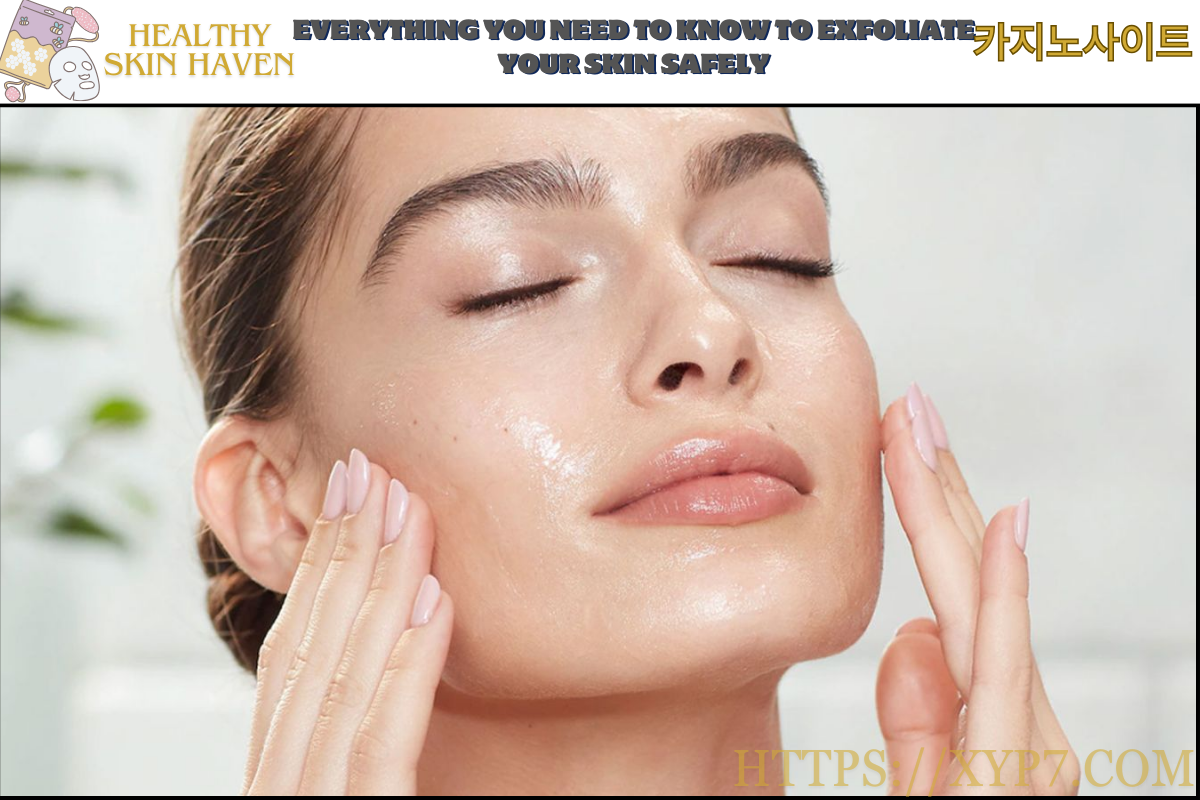Everything You Need to Know to Exfoliate Your Skin Safely. Dead skin cells are eliminated from the skin’s outer layers through exfoliation. It can help exfoliate dry or dull skin, improve blood circulation, and make your skin look better and more radiant.
There are various exfoliation techniques. Which technique you use and how often you exfoliate should be determined by your skin type. Exfoliation is typically discouraged for certain skin conditions, such as rosacea.
RELATED: Everything You Should Know About Chemical Exfoliation

Products for Exfoliation
There are various instruments and techniques for skin exfoliation. Face scrubs and brushes are examples of physical or mechanical exfoliation techniques. Chemical exfoliation comes in the form of acids and skin peels.
Mechanical
Brush for exfoliation. Usually, layers of dead skin cells are removed from the face or body using this bristle brush. A few are made to be used with a dry brush. You can use some with your body wash or facial cleanser.
Sponge for exfoliation. This is a kinder method of exfoliating the skin. In the shower, you can use body wash, soap, or warm water to lather an exfoliating sponge.
Glove for exfoliation. If you have trouble gripping brushes or sponges, wear a glove. In the shower, lather it with body wash or soap. For broad regions like the arms or legs, they may be useful.
Scrub with exfoliation. Applying this directly to the skin requires using a soft, circular motion. After using the scrub, you can rinse your skin with warm water.
Chemical
The acids alpha-hydroxy (AHAs). Glycolic, lactic, tartaric, and citric acids are a few AHA examples. These function by dissolving the bonds that hold dead and dull skin cells to the surface of your skin. Your skin will naturally shed dead particles as a result of this.
Acids with a beta-hydroxy (BHA). Salicylic acid and beta hydroxyl are two examples of BHAs. These might be superior for skin prone to acne.
How each skin type should exfoliate their skin
It is crucial to use caution when mechanically exfoliating your skin. Applying a scrub can be done with your finger in tiny, circular motions or with your preferred exfoliating tool.
Make light, brief brushstrokes if you’re using one. After roughly 30 seconds of exfoliation, rinse with warm, not hot, water. If you have sunburned, cut, or open wounds on your skin, do not exfoliate. After exfoliating, use an SPF-containing moisturizer.
Dry skin
For skin that is flaky or dry, exfoliation is essential. On dry skin, stay away from mechanical exfoliation as it can cause microtears and is a drying process. AHAs work well for the skin that is dry.
Glycolic acid promotes healthy skin turnover by assisting in the removal of dead skin cells that are sitting on the skin’s surface. Apply a moisturizer and SPF after using glycolic acid. It might increase the skin’s vulnerability to sun damage.
Sensitive skin
Steer clear of scrubbing and mechanical exfoliation techniques. These could make your skin even more irritated and red.
Using a soft washcloth, apply a mild chemical exfoliator. In your dermatologist’s office, you can also try a salicylic acid peel for acne.
Oily skin
Physical exfoliation and brushing are beneficial for oily or thicker skin types. Manual exfoliation can help remove any extra layer of buildup that may be present on the surface of oily skin. For best results, use a scrub or exfoliator gently in circular motions.
Normal skin
You can use any exfoliation technique if there are no issues with your skin. Exfoliation by hand and chemical means are both safe for this type of skin. To determine which technique is best for your skin type, you might need to try a few out 카지노사이트.
Combination skin
A combination of chemical and mechanical exfoliation may be necessary for combination skin. Since they can irritate the skin, never use both on the same day. Apply a moisturizer right away if exfoliation leaves your skin feeling dry.
